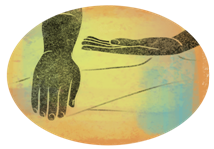

Context
The Archaeological Survey of India has unearthed a Buddhist monastery, believed to be at least 900 years old, buried under a mound in a village situated in a hilly area of Hazaribagh district of Jharkhand.
About
Key-findings
- The findings are made in Burhani village near Juljul Pahar of Sitagarhi Hills located around 12 km from district headquarters
- The monastery is believed to be at least 900 years old.
- The sculptures each stand two to three feet tall.
- As per the evidence found at the current site, it appeared that the structures had been built during the Pala period.
- Following findings have been made:
- Four statues of deity Tara in Varad Mudra
- Varad Mudra is the gesture of hand showing dispensing of boons

- Varad Mudra is the gesture of hand showing dispensing of boons
- Four statues of deity Tara in Varad Mudra
|
- Six statues of the Buddha in Bhumisparsa Mudra
- Bhumisparsa Mudra is the gesture of hand showing five fingers of right hand towards the earth symbolising the Buddha’s enlightenment.

- Bhumisparsa Mudra is the gesture of hand showing five fingers of right hand towards the earth symbolising the Buddha’s enlightenment.
Other important Mudras
|
Mudras |
Symbol |
|
Dhyana Mudra The gesture of absolute balance, of meditation. The hands are relaxed in the lap, and the tips of the thumbs and fingers are touch each other. |
 |
|
Abhaya Mudra Gesture of reassurance, blessing and protection |
 |
|
Dharmachakra Mudra The gesture of teaching, usually interpreted as turning the Wheel of Law. The hands are held level with the heart, the thumbs and index fingers form circles. |
 |
|
Vitarka Mudra (Intellectual argument discussion) The circle formed by the thumb and index finger is the sign of the Wheel of Law. |
 |
|
Tarjani Mudra (Threat warning) The extended index finger is pointed at the opponent. |
 |
|
Jnana Mudra (Teaching) The hand is held at chest level and the thumb and index finger again form the Wheel of Law
|
 |
|
Karana Mudra Gesture with which demons are expelled |
 |
|
Uttarabodhi Mudra (The gesture of Supreme Enlightment) Two hands placed together above the head with the index fingers together and the other finger interwined. |
 |
Role of Pala Dynasty in Buddhism
- The Pala Dynasty ruled the regions of Bengal and Bihar between the 8th and 11th centuries.
- It supported the establishment of Buddhist institutions, including monasteries, while also permitting the flourishing of Hinduism, the majority religion of the area.
Importance of the findings
- The findings assume significance since the monastery is on the old route to Varanasi, 10 km from Sarnath, where the Buddha gave his first sermon.
- Furthermore, the presence of statues of deity Tara shows possible proliferation of Vajrayana form of Buddhism in this region.
- Vajrayana is a form of Tantric Buddhism, which flourished in India from 6th to 11th century.


